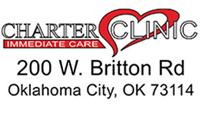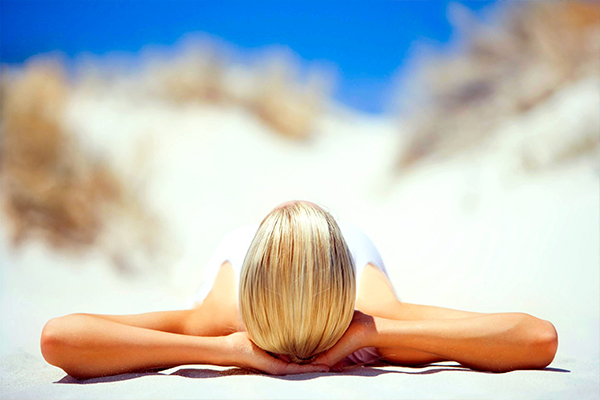It’s that time of year for a little sunburn 101!
What Causes Sunburn
You already know the simple explanation behind sunburn. When your skin is exposed to the sun for a period of time, eventually it burns, turning red and irritated.
Under the skin, things get a little more complicated. The sun gives off three wavelengths of ultraviolet light:
- UVA
- UVB
- UVC
UVC light doesn’t reach the Earth’s surface. The other two types of ultraviolet light not only reach your beach towel, but they penetrate your skin. Skin damage is caused by both UVA and UVB rays.
Sunburn is the most obvious sign that you’ve been sitting outside for too long. But sun damage isn’t always visible. Under the surface, ultraviolet light can alter your DNA, prematurely aging your skin. Over time, DNA damage can contribute to skin cancers, including deadly melanoma.
How soon a sunburn begins depends on:
- Your skin type
- The sun’s intensity
- How long you’re exposed to the sun
A blonde-haired, blue-eyed woman sunbathing in Rio de Janeiro will redden far sooner than an olive-complexioned woman sitting out on a sunny day in New York City.
Signs of Sunburn
When you get a sunburn, your skin turns red and hurts. If the burn is severe, you can develop swelling and sunburn blisters. You may even feel like you have the flu — feverish, with chills, nausea, headache, and weakness.
A few days later, your skin will start peeling and itching as your body tries to rid itself of sun-damaged cells.
Sunburn Relief
Sunburn treatment is designed to attack the burn on two fronts — relieving reddened, inflamed skin while easing pain. Here are a few home remedies for sunburn:
Compresses. Apply cold compresses to your skin or take a cool bath to soothe the burn.
Creams or gels. To take the sting out of your sunburn, gently rub on a cream or gel containing ingredients such as:
Menthol
Camphor
Aloe
Refrigerating the cream first will make it feel even better on your sunburned skin.
NSAIDs. Nonsteroidal anti-inflammatory drugs, like ibuprofen or naproxen, can relieve sunburn swelling and pain all over your body.
Stay hydrated. Drink plenty of water and other fluids so that you don’t become dehydrated.
Avoid the sun. Until your sunburn heals, stay out of the sun.
You may be able to treat the sunburn yourself. But call for a doctor’s help if you notice any of these more serious sunburn signs:
Fever of 102 degrees or higher
Chills
Severe pain
Sunburn blisters that cover 20% or more of your body
Dry mouth, thirst, reduced urination, dizziness, and fatigue, which are signs of dehydration
Preventing Sunburn
Here are some tips for keeping your skin safe when you’re outside:
Watch the clock. The sun’s rays are strongest between 10 a.m. and 4 p.m. If you can’t stay indoors during that block of time, at least stick to shady spots.
Wear the right clothes. When you have to be outdoors, wear sun-protective clothing, such as:
A broad-brimmed hat
A long-sleeved shirt and pants
UV-blocking sunglasses
Use sunscreen. Cover any exposed areas of skin liberally with at least 1 ounce of broad-spectrum sunscreen. That means sunscreen that protects against both UVA and UVB rays.
The sunscreen should have a sun protection factor (SPF) of at least 30. Follow these tips for applying sunscreen:
Apply sunscreen about 30 minutes before you go outside.
Use sunscreen even on overcast days because UV rays can penetrate clouds.
Reapply sunscreen every two hours — or more often if you’re sweating heavily or swimming.

